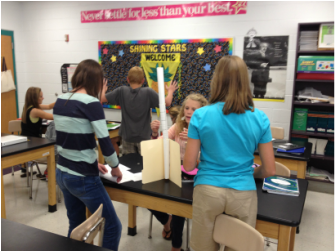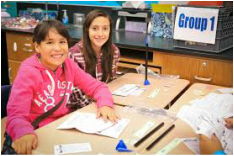8th Grade Mathematics
|
Grade 8 mathematics focuses on three critical areas:
|
First Quarter During the first 9-weeks...
students will:
Functions: F.1,2,3,4 Geometry: G.6,7,8 Number System: NS.1,2 Expressions and Equations: EE. 2,5 |
Second QuarterDuring the second 9-weeks...
Students will build on their work with functions from the first nine weeks to:
Functions: F.1,3,4 Expressions and Equations: EE. 5,6,7 a,7b, |
Third QuarterDuring the third 9-weeks....
Students will:
Geometry: G.1,2,3,4,5 Statistics: SP.1,2,3,4 Functions: F.5 |
Fourth QuarterDuring the fourth 9-weeks......
Students will continue their work with Solid Geometry and Expressions and Equations. For Geometry they will:
Geometry: 9 Expressions and Equations: 1,3,4,7,8 |
The Big Ideas: Click in order to get additional information and support





